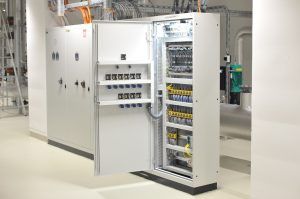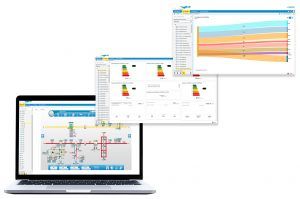Developing Secure Building Automation Devices with IEC 62443-4-1
Building automation relies on secure, resilient devices to manage essential building systems. Following IEC 62443-4-1, SAUTER integrates security throughout development, applying threat modeling, risk assessments and secure coding. Multi-layer defense, from physical to data security, protects against vulnerabilities. End users benefit from reduced cyber risks, reliable operations, and long-term support with timely security updates.
Building automation consists of automated solutions to control and monitor the systems used within a building to provide different types of services. In our fast-paced world, where building automation stations are becoming increasingly integral to our daily lives, ensuring the security of these systems is paramount. As technology continues to advance, so do the potential risks associated with interconnected systems. At SAUTER, we understand the responsibility we hold in safeguarding our users’ data and devices against potential cybersecurity risks. Cybersecurity is not just a priority, it is a fundamental principle that drives every action. SAUTER is dedicated to earning and maintaining the trust of our users through our unwavering commitment to cybersecurity excellence.
Security end-to-end
At SAUTER, we are adopting the IEC 62443-4-1 standard into our product development process, aiming to reduce the risk of vulnerabilities being introduced into devices and ensure that products are resilient against cyber threats. Security culture is embedded into our way of working. We are committed to follow security policies for handling security risks and our team members are trained in secure development practices.
Qualifying how and what needs to be achieved to develop a secure device according to IEC 62443-4-1
Each product shall have its own assets, something we want to protect, such as data processed in the device, configuration, device control function or simply intellectual property. If a given asset is of value for intercepting, it is necessary to develop a threat model, what can be understood as looking through the eyes of the adversary and considering potential attack paths, such as remote control of the device or unwanted hardware modifications. Each of them is subject to a detailed risk assessment and as a result a set of requirements and checks are selected to keep the assets secure.
Once the threat model is established, devices are developed with secure design principles such as defense-in-depth, access control, encryption and many more. During implementation it is required to follow secure coding practices to ensure that code will not be vulnerable for common threats, for example SQL injection or buffer overflow. Our products undergo thorough verification and validation through functional security testing, penetration testing and vulnerability scanning. We continuously monitor the environment and in the event of any significant, exploitable vulnerabilities we deliver security updates to address them.
In addition, our products include security guidelines to help end users securely configure and operate the devices. The guidelines outline best practices for ongoing security maintenance, performing security updates and managing potential incidents. Furthermore, legal constraints and regulations such as the EU NIS-2 and CRA Directives require continual development and maintenance of the security level, which is enforced through these processes.
Defense in depth
Defense in depth implies multiple layers of security and detection. Those layers work independently, a flaw in one layer can be mitigated by capabilities in other layers.
The organization layer focuses, among others, on establishing policies, procedures and governance frameworks, to support and enforce security measures across all layers of an infrastructure, systems and operations.
The physical security layer primarily focuses on protecting physical assets, such as control systems, industrial equipment and facilities from unauthorized access, tampering or damage. .
The perimeter security layer focuses on protecting the boundaries of the industrial control system network from external threats. This layer acts as the first line of defense against unauthorized access, malicious attacks and other security risks.
The network layer focuses on protecting the communication infrastructure and data flows from various cyber threats and vulnerabilities.
The endpoint layer focuses on protecting individual devices, such as computers, servers, industrial controllers and other endpoints from various cyber threats and vulnerabilities.
The application layer focuses on securing the software applications and services that are used within devices. This layer aims to protect against vulnerabilities and threats that target the functionality and behavior of these applications.
The data layer focuses on safeguarding the integrity, confidentiality and availability of data within devices. This layer aims to protect sensitive information from unauthorized access, tampering or disclosure.
What does it mean to you?
- Enhanced security: Our devices have implemented robust security features.
- Reduced risk of cyber-attacks: End users benefit from reduced vulnerability to threats like ransomware, malware and unauthorized access to their control systems.
- Reliability and integrity: Our devices operate reliably even when under cyber-attack, this is because they are equipped with security controls such as logging mechanisms, integrity checks and many more.
- Long-term security support: we provide timely deployment of security patches and support with maintaining secure operations.
Want to know more?
Discover how SAUTER commitment to IEC 62443-4-1 can enhance your building automation security. Reach out to explore our advanced security practices and learn how to protect your devices from arising cyber threats. Don’t risk, secure your building automation infrastructure today – contact us for details!
You need to load content from reCAPTCHA to submit the form. Please note that doing so will share data with third-party providers.
More Information



